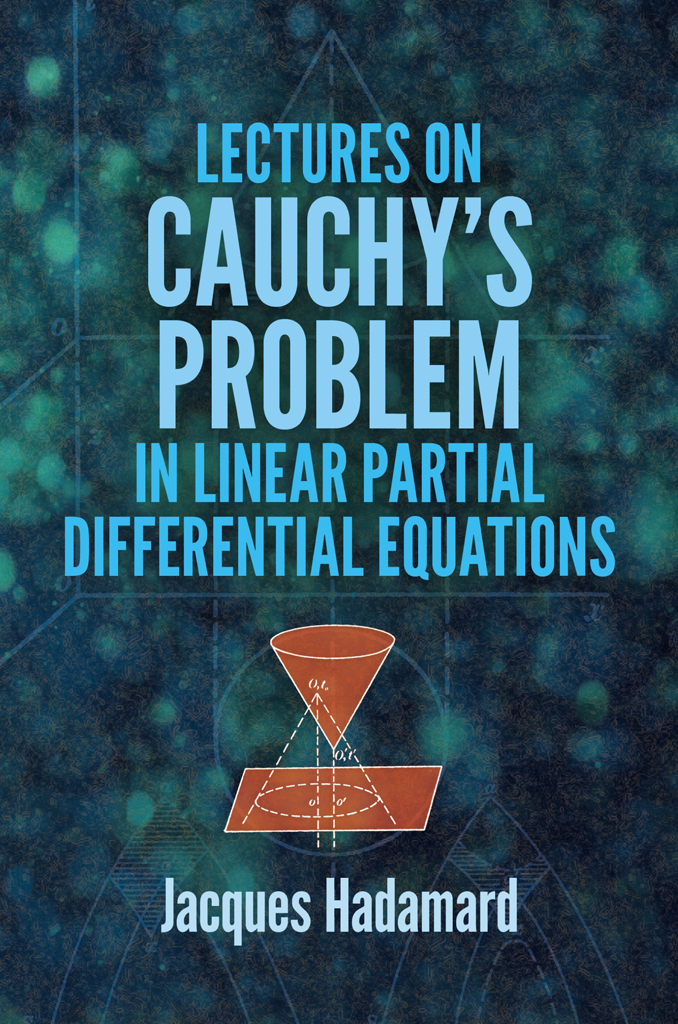

Most ebook files are in PDF format, so you can easily read them using various software such as Foxit Reader or directly on the Google Chrome browser.
Some ebook files are released by publishers in other formats such as .awz, .mobi, .epub, .fb2, etc. You may need to install specific software to read these formats on mobile/PC, such as Calibre.
Please read the tutorial at this link: https://ebookbell.com/faq
We offer FREE conversion to the popular formats you request; however, this may take some time. Therefore, right after payment, please email us, and we will try to provide the service as quickly as possible.
For some exceptional file formats or broken links (if any), please refrain from opening any disputes. Instead, email us first, and we will try to assist within a maximum of 6 hours.
EbookBell Team

4.3
38 reviewsWould well repay study by most theoretical physicists." — Physics Today
This book is a reprint of a volume, originally published by the Yale University Press, of Hadamard's lectures on hyperbolic differential equations, given at Yale
in 1921. It is useful to have this fundamental analysis
of the relation between equation type, boundary conditions, and solutions again generally available.
Since the advent of quantum theory the interest in
solutions of a hyperbolic differential equation (such as
the wave equation) has rather changed its emphasis
away from the study of the effects of boundary conditions on specified surfaces. Nevertheless, the results of
such classical studies are still of interest and some of
the techniques used (such as that of the Green's function) have continuing, and even enhanced, utility.
The work reprinted here is one place, in the knowledge of the reviewer, where the effect of boundary conditions on the solution of hyperbolic equations is given
in unified and general manner. Here is discussed, in
some detail, the differences between hyperbolic and
elliptic equations with respect to their characteristic
surfaces, and the bearing this has on their differences
with respect to boundary conditions. Here also are discussed, in considerable detail, the differences in behavior
of waves in one, three, etc. dimensions and of waves in
two, four, etc. dimensions.
The techniques used in the analyses and in the exposition are not often those used in modern theoretical
physics. Nevertheless, the book is one which would well
repay study by most theoretical physicists.
—Philip M. Morse
Massachusetts Institute of Technology
"An overwhelming influence on subsequent work on the wave equation." — Science Progress
"One of the classical treatises on hyperbolic equations." — Royal Naval Scientific Service
Delivered at Columbia University and the Universities of Rome and Zürich, these lectures represent a pioneering investigation. Jacques Hadamard based his research on prior studies by Riemann, Kirchhoff, and Volterra. He extended and improved Volterra's work, applying its theories relating to spherical and cylindrical waves to all normal hyperbolic equations instead of only to one. Topics include the general properties of Cauchy's problem, the fundamental formula and the elementary solution, equations with an odd number of independent variables, and equations with an even number of independent variables and the method of descent.
Hadamard's Pamphlets contains the paper "Les surfaces à courbures opposées et leurs lignes géodésiques" (p. 71; cf. Jaki's Uneasy Genius p. 350fn113), a classic in chaos theory, that inspired "Duhem's bull" (e.g., in his Aim & Structure of Physical Theory p. 139 ff.).